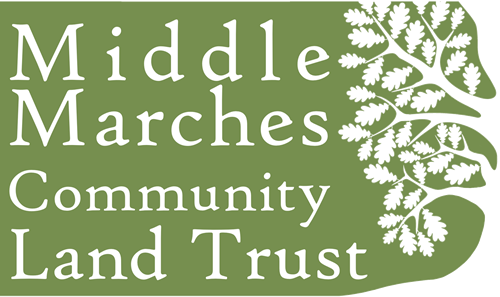Norbury Hill (July 2021 update)
Situated centrally in the Stepping Stones area in south west Shropshire, Norbury Hill has been described as ‘the largest stepping stone’ between two important sites of conservation, the Long Mynd belonging to the National Trust and the Stiperstones National nature reserve. MMCLT took ownership of part of the hill in mid-May 2021.
The hill is a mosaic of habitats including rush pasture, bracken, semi-improved acid grassland, gorse, scrub, streams and areas of bog. The northern boundary of our 47 acre site runs near to the Shropshire Way. The area owned by MMCLT is divided in two by a north/south fence. To the east on the hilltop it is largely grassland while below the slope is grassland bracken.
Across the Hill, there are good examples of wetland plant communities, which flourish next to a small stream running down off the steep high ground. It also hosts a once common, but now endangered insect, the Small Pearl-bordered Fritillary butterfly.
It supports breeding skylark, meadow pipits and is a feeding ground for Kestrel, Curlew, Snipe and Linnet. Norbury Hill is a County Wildlife Site as designated by Shropshire Wildlife Trust.
It contains the following threatened Priority habitats:
- Upland heathland,
- Purple moor grass and rush pastures,
- Upland flushes, fens and swamps
As a new purchase it is important to fully understand what already exists from an ecological, landscape, agricultural and human perspective.
A priority is to complete baseline surveys of vegetation, birds and invertebrates in 2021 as the results will then guide our medium/long term conservation management. To that end we are employing an ecologist and ornithologist to do a full environmental survey.
Thanks to grants from the Stepping Stones project and the AONB’s Conservation fund we have been able to widen that remit and survey the adjacent land and that of the neighbouring farmer. This will help show our site in a much wider context.
So far we know about the Small Pearl-bordered Fritillary butterfly and Curlew as key species but the surveys may well show others.
By continuing to monitor into the future we can get the optimal conditions for the key species and provide a stronghold from which they can expand in the future.
In the short-term, continued management as low-intensity farmland would appear to be the best option as this avoids sudden changes which may entail risks to any current conservation interest. Initially we plan to continue working with a similar grazing regime both with our partner and the neighbouring farmer. Initially we intend to leave the land between MMCLT and our partner unfenced but marked by white topped posts.
Please respect this by keeping to the footpath.
Also by working with our neighbours we can hopefully increase the conservation benefit and by showing good practice on our land we will widen that understanding still further. Cattle grazing is preferable to sheep grazing to help create a more varied vegetation structure and cattle dung and trampling can be beneficial for some plant and invertebrate species. They would also cope better with the taller vegetation and could be encouraged to trample the bracken as the fronds unfurl.
There are three potential sources of funding if the land is managed for agriculture: basic payment scheme (BPS), Countryside Stewardship and grazing rental. We hope to take advantage of all three. Going forward into the new government Environment Land Management Scheme we wish to show that an upland area can be managed to benefit wildlife and be financially viable and used as an example to other local landowners.
Access to Norbury Hill is via the public footpath or bridleway from the lane one mile north of Norbury or by approaching along the Shropshire Way from Linley Beeches. Either way is a good walk.
At present we would ask people to keep to public footpaths as particularly in the lower part of the site there are some very boggy areas.
We will be leading walks on the hill over the coming months.
